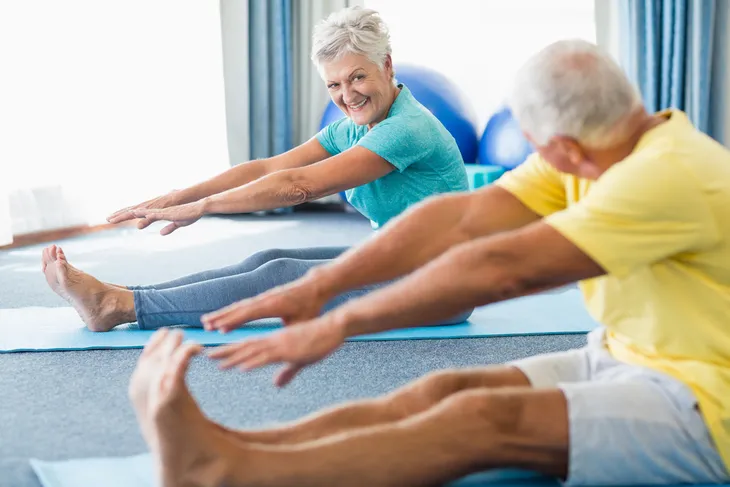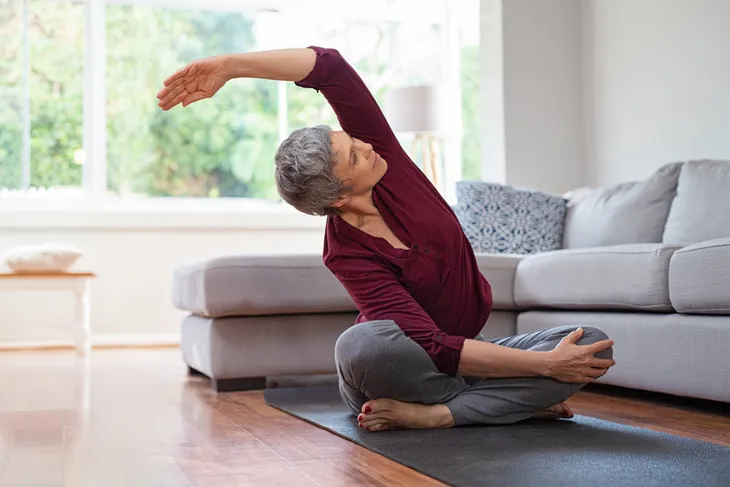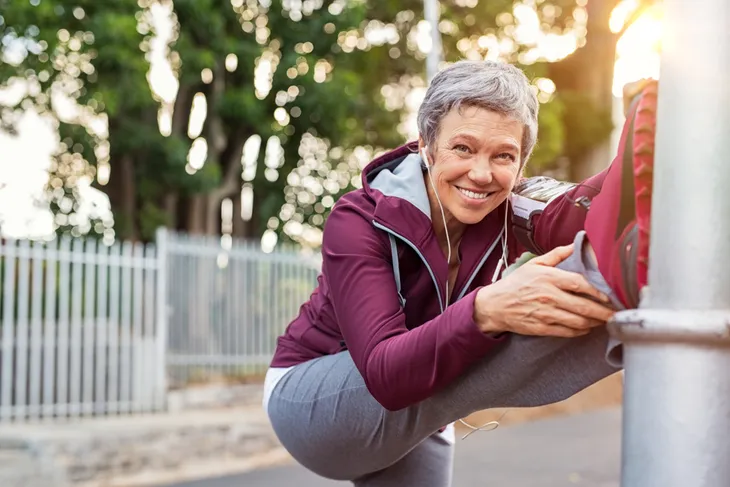One of the unfortunate side effects of aging is that the little things become more difficult, such as putting on socks and shoes in the morning or picking up something off the floor. There might be a little more stiffness or pain, and it usually starts to creep up around the age of 40. Our muscles and tendons work together to allow us to move freely, but if we aren’t stretching regularly, these muscles and tendons become stiff and less flexible.
This might not seem like a big issue now, but if this loss of flexibility continues to get worse, so will the side effects. You might start to find it difficult to go on long walks, exercise, or even get out of bed in the morning! The good news is this is preventable and seniors can easily improve their flexibility so that their muscles and tendons stay agile with age. Here are some tips on how seniors can improve flexibility…
Want senior content delivered straight to your inbox? Sign up for our exclusive email list and receive articles and news on diet & nutrition, fitness, and mental health dedicated specifically to our senior audience!
Visit a Professional
First things first, go see a professional. You don’t want to create anymore pain or cause an injury, so the best thing to do right off the bat is to visit a professional. This could be a yoga instructor, personal trainer, or physiotherapist. Any of these people could curate a personalized stretching routine that will work on flexibility. You need to make sure you’re doing stretching properly and on a daily basis.
Stretch Daily
Stretching is something that needs to be done on a regular basis, especially if you want to reap the benefits of all your hard work! So, the best way to make progress when it comes to flexibility is to be consistent. Set aside 5-minutes every day to stretch any tight and sore muscles. To speed up the process, try stretching both at morning and night.
Never Stretch Cold
While it might seem a little obscure, the body really doesn’t like to be stretched when cold. You don’t want to be shivering while trying to relax into a stretch. Always dress warm while stretching, like in a pair of track pants and hoodie. This way, the body will stay nice and relaxed, making it easier to stretch and lengthen those tight muscles.
Don’t Push Into Pain
The golden rule when stretching (and exercising) is to not push into the pain. If you feel pain, stop. When stretching, you just want to feel a gentle pull in the muscle that is being lengthened. This gentle pulling feeling should never turn into pain. The goal is to lengthen the muscles, not damage them.
Breathe Deeply
A lot of people make this mistake while stretching and even working out. They tend to get so focused on the discomfort or task at hand that they forget to breathe! It might seem like a silly reminder to say, but don’t forget to breathe while stretching. Deep breaths allow the lungs to deliver freshly oxygenated blood to the muscles that are being stretched. It will also help you relax into the stretch making it more effective.
Hold the Stretch
Stretching isn’t something that can or should be rushed. Once you’ve started a stretch, you need to sit and hold it. Find that sweet spot where you feel a gentle pull and then hold this position for at least 40-seconds. As time goes on, you’ll notice that your body adjusts to your stretching routine. Eventually it’ll be no problem to hold these stretching for 1 full minute to get a nice and rewarding deep stretch.
Try a Yoga Class
One of the best forms of exercise when it comes to stretching and flexibility is yoga. Doing yoga will help improve flexibility and teach you some great new ways to (safely) stretch the body. Most cities and towns have a local yoga studio, and if not there are tons of resources online for virtual classes.
However, it might be a good idea to go in person if it’s your first time as some of the moves can be a little tricky at first. Once you’ve got the hang of it, you should be well equipped to implement some of these stretching into your daily home routine.
Stretch Muscles That Are Tight
We all have tight and sore muscles — even young people! It’s a natural thing, but also not something we should live with on a regular basis. It can be easily fixed by doing regular stretches. If you notice the same muscles are tight every day, then focus on stretches that will help loosen these specific muscles. This is a great way to mix in variety into your routine as you can pick and choose which muscles you want to work on.
Stretch the “Trouble” Areas
If you find yourself feeling stiff while bending down to touch the floor or put on socks and shoes in the morning, then turn this into a stretch! Practice this movement on a daily basis until it eventually gets better. This particular move would be focusing on hamstrings. So perform three sets of 40-second to 1-minute holds, and then touch the floor again. There’s a good chance you’ll get closer to the floor the second time around after a nice long stretch.
Keep Track of Progress
The best way to continue making progress in your journey to better flexibility is by keeping notes. After a stretching session, write a brief note on the muscles you stretched, and the stretches that were causing some greif. If you keep track, you’ll know exactly what stretches to perform the following day.
It doesn’t matter if you’re looking for flexibility to play with your grandchildren or to just continue participating in your favorite activities, stretching should become a part of your daily routine. Start slow, seek professional help, and commit to a daily schedule. If you follow these steps, you should start to see results straight away. However, the goal is for these results to carry over long-term and the best way to ensure that is by staying consistent. Good luck!













